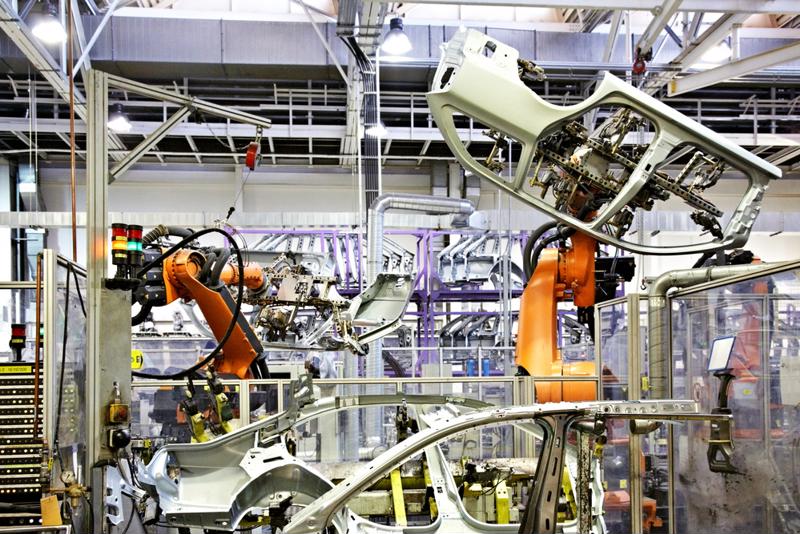The automobile industry's use of augmented reality (AR) is analogous to using a GPS system, giving designers and engineers a path to follow when designing and manufacturing vehicles. AR is the use of digital information to supplement and enhance how users see and interact with their surroundings in the real world.
AR's use in the automotive industry is expected to grow exponentially. According to Fortune Business Insights, the global market for augmented reality in the automotive sector will increase at a CAGR of 18.1%, from $4.51 billion in 2021 to $14.44 billion in 2028. Moreover, AR is transforming the design and manufacture of automobiles, thus changing the overall driving experience.
AR in design
Have you ever wondered how it's possible for new and advanced designs in vehicles to be released so often and fast? This efficiency can be attributed to cutting-edge technologies like AR, and it's becoming more understandable why AR is rapidly evolving into a crucial tool in the automobile industry.
AR allows designers to interact with their creations in real time and receive invaluable insights simply by projecting virtual 3D models of automobiles onto an environment before production. Additionally, designers can experiment with new designs and accurately visualize the finished product by superimposing digital images onto existing car parts. This state-of-the-art technology results in more creative and aesthetic car designs.
AR in manufacturing
The hows and whys of your vehicle's build may start with AR, and this allows you to easily trust its safety and efficiency when it's purchased. It's having a significant impact on complex assembly operations, supporting manufacturers through the stages needed for assembling intricate machinery.
AR enables workers to view each step of the vehicle assembly process in real time by incorporating digital instructions and visual assistance into their surroundings. Furthermore, engineers can gain additional data about vehicles: maintenance schedules, repair techniques and safety guidelines. Overall, AR gives them the ability to complete complex assembly tasks with greater assurance and accuracy, producing final products with higher quality and greater dependability.

Benefits of using AR in vehicle design and manufacture
Saves time: With designers being able to see and modify their designs in real time before committing to physical prototypes, it reduces the amount of time needed for the process, while enhancing speed and accuracy.
Saves money: Manufacturers can save money on materials and labor by avoiding the cost of creating numerous physical prototypes to see and test. AR also assists manufacturers in avoiding expensive recalls and rework by quickly spotting design flaws and inconsistencies.
Identifies flaws: By visually modeling items and spotting design faults early on, manufacturers can lessen the need for pricey and time-consuming rework, streamlining the product development process and increasing overall efficiency.
Reduces errors: When assembling complicated products, AR can direct workers by highlighting the location of each component and providing step-by-step instructions. This lessens the possibility of mistakes, enhances the quality of the end product and decreases the need for rework.
Avoids unsafe products: Manufacturers can avoid releasing products that might be dangerous or put customers at risk by simulating product use with AR and spotting possible problems.
Saves human resources: AR conserves human resources by allowing designers and engineers to collaborate remotely. Team members can work together with AR from any location, eliminating the need for expensive travel and promoting more effective teamwork.
Avoids legal issues: By giving manufacturers real-time compliance information and notifications, AR can reduce the risk of legal problems while assisting manufacturers in keeping up with new rules and standards.
Enables product variation: The use of AR in design and production enables quick and simple experimentation with various designs, materials, colors and features, resulting in more innovative and one-of-a-kind products that satisfy changing consumer needs. By offering a more specialized and individualized product offering, manufacturers can stand out from competitors.
AR and the driving experience
After a vehicle is designed and manufactured, drivers are the ones who can most enjoy its capabilities. Both advantages and disadvantages are currently being observed, but with AR becoming more popular and advanced, interest in its use is growing. Data from Statista reveals that 12% of Americans are interested in using AR for driving and travel. Ultimately, AR may revolutionize not only the design and manufacture but also the full operation and function of vehicles.
Greening Testing Laboratories is a fully certified brake testing lab that provides a variety of brake testing services worldwide. Contact Greening for a complimentary consultation.
